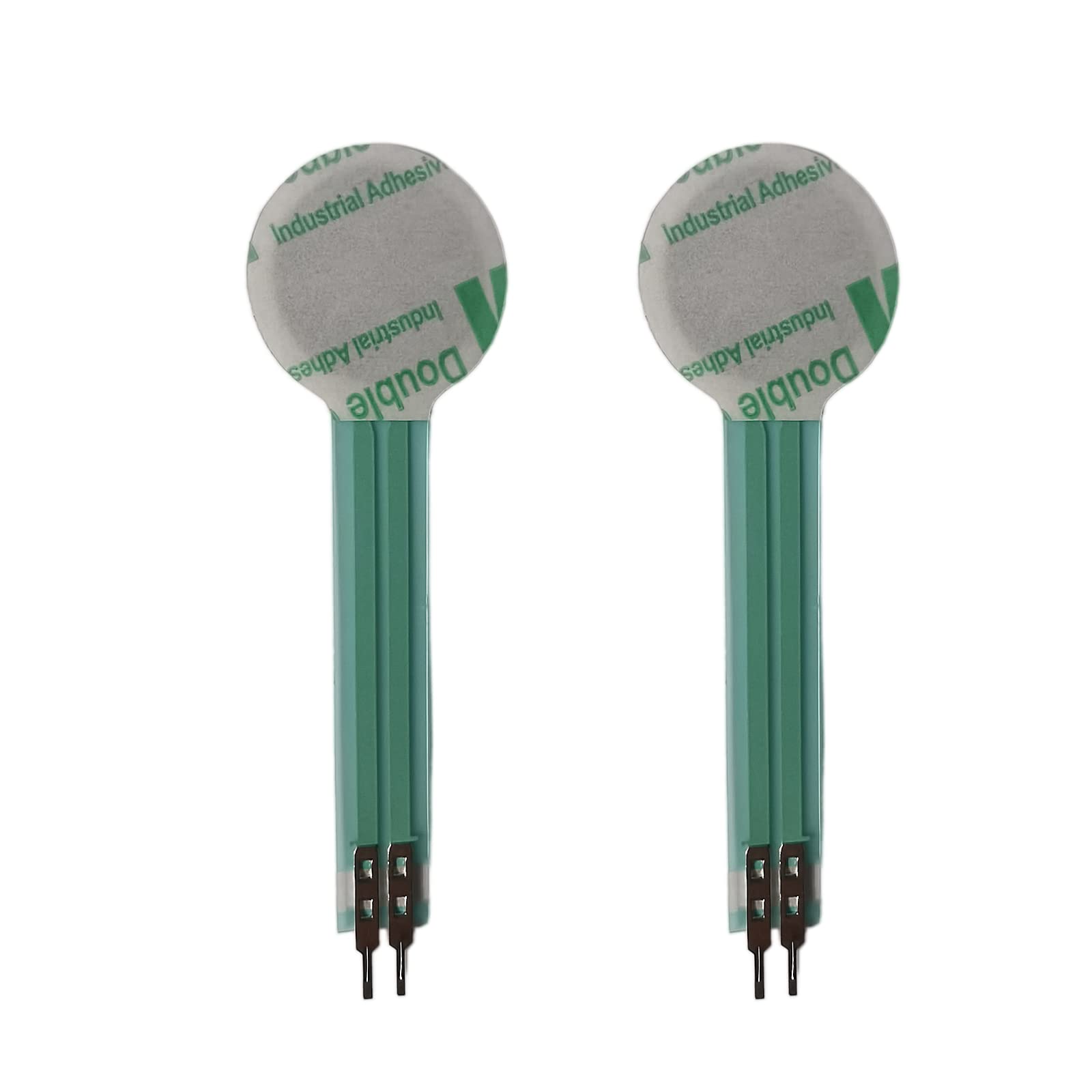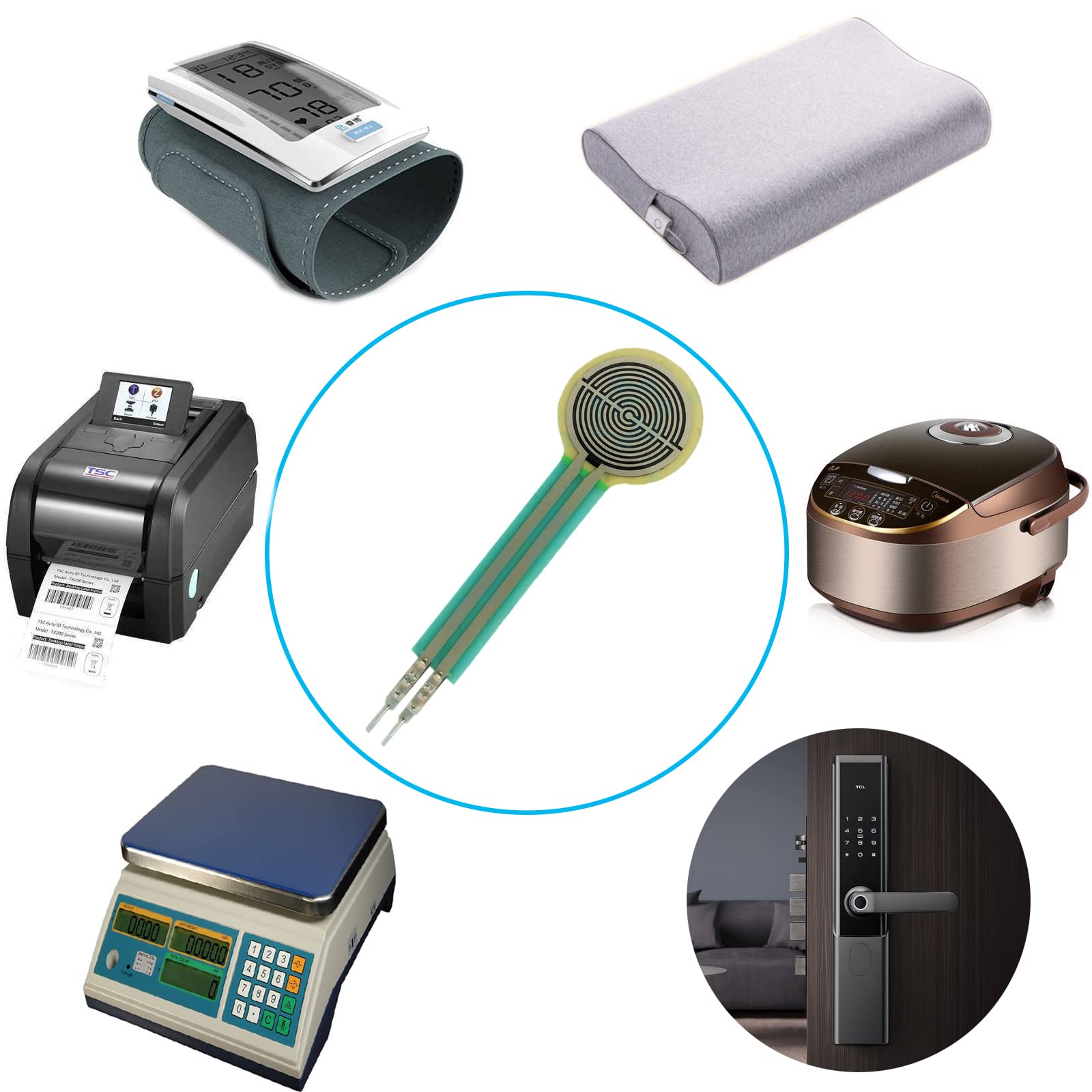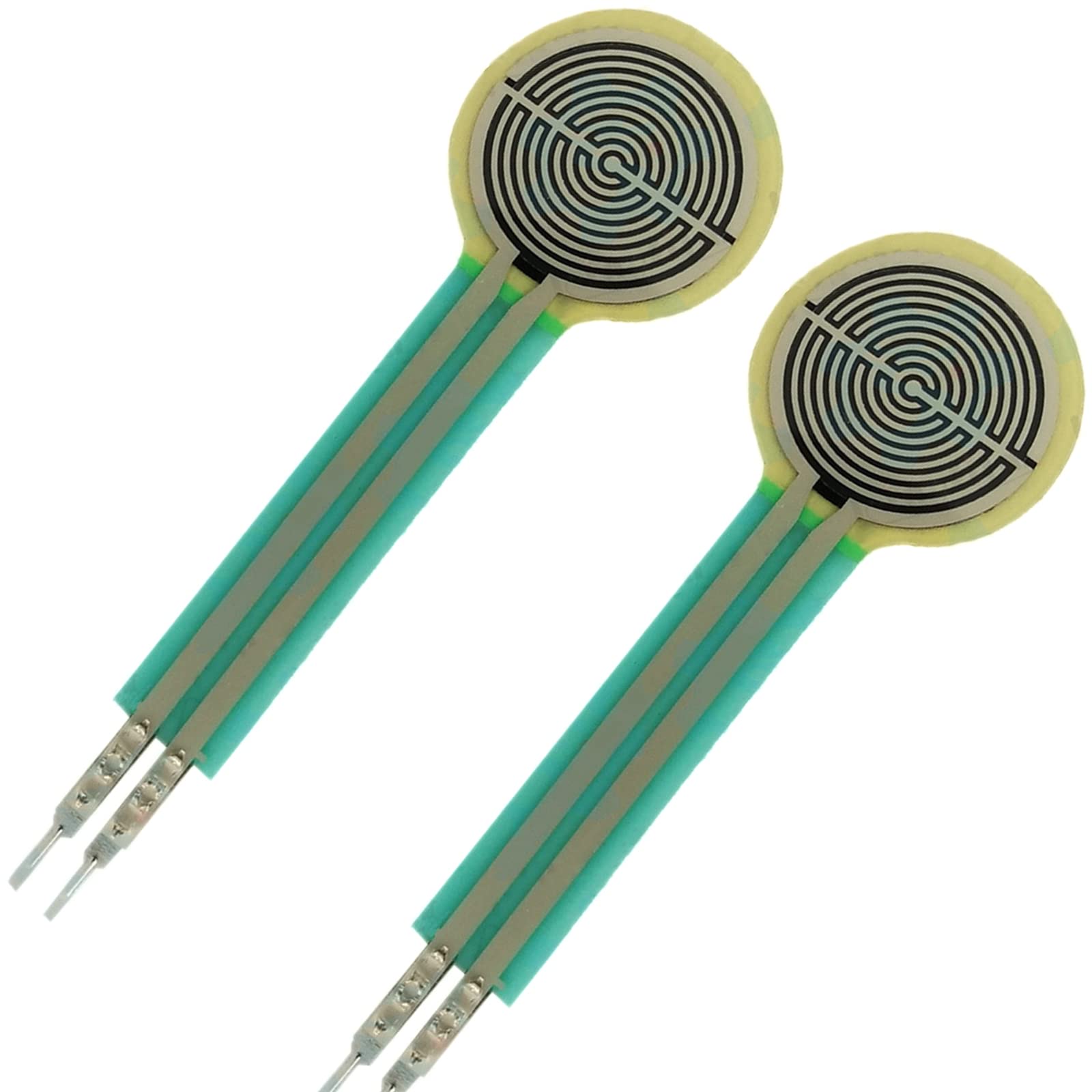









🔍 Discover the power of precision sensing!
The Force Sensing Resistor is a high-precision flexible force gauge designed for both home and industrial applications. With a measurement range of 20g to 6kg, it features quick response times and easy signal conversion, making it an essential tool for accurate pressure detection. Constructed from durable polyester film and advanced materials, this sensor is built to last.
| Material | Polyester |
| Item Weight | 10 Grams |
| Item Dimensions | 6.3 x 1.9 centimetres |
M**K
Very sensitive, easy to use
These FSRs work fantastic. I tested supplying ~4.8v to it with a 10k static resistor wired to ground in a voltage divider setup, both with a follower op-amp (lm358) and without. I was using 50g and 500g calibration weights for tests (carefully balanced on size-mismatched RC flange coupler) along with some spare change. A not-so-precise voltmeter was also used off the divider as a sanity check for what I was seeing from the ADC. I took readings every 50ms with a rolling average over 5 readings. I know these aren't going to be terribly accurate, that they're really just meant to say "you're pressing harder than a moment ago", but I was able to get fairly precise when it came to gauging differences.With 50g being near the bottom of where these will register, I knew it could get a little tricky and I expected values to be all over the place (see the graph on the datasheet). The largest challenge with these when attempting "accurate" measurements (I'm pretty sure they're spec'd at +-10% even with equal pressure) is applying pressure equally over the entire sensing area. You won't be able to just randomly sit something on top of it on a desk surface and read anything remotely accurate. That won't work. Thankfully, I had that little flange coupler laying right on my desk that allowed me to use my calibration weights for testing, but it only covered maybe half the sensor, so I knew it was going to be even further off. As you can see, using the provided logarithmic function on their datasheet, it registered the 50g calibration weight + the roughly 16g coupler as being a little over 18g. Again, I wasn't expecting a 66g reading, and 66g is at the very extreme low end at the steepest part of the force/resistance curve so even the slightest change could send those numbers flying. However, that works out OK as long as you're targeting that range.I wanted to see if I could tell the difference between smaller weights. In this case, spare change. The difference between a dime and a penny is roughly .25g, or approx .009oz, which I thought would be a challenging test.Since the coupler+50g weight were enough to put it in its trigger state, I used it as a sort of base measurement, to keep it engaged. I took readings using just the base, base+dime, base+penny, and I'm happy to report I could easily tell the difference. Using the 0-1023 readings from the ADC directly told me all I needed to know -- see the attached images. The op-amp follower helped keep things a little less erratic but required slightly more settling time. Overall, quite impressive for my very poorly constructed testing environment! With the weights sitting on top of the sensor that were sitting on my desk, I could even tell when somebody was walking by in the hallway outside the room I was in. Hah! Pretty neat, but just note that the pressure/resistance curve is mostly linear after maybe 1.3-1.4kg, so I wouldn't expect to tell the difference between a penny and a dime as easily once that much pressure is applied. Not without significant changes my circuit, anyway.I'm very pleased with what I saw from these sensors!
K**I
Contact area is critical
These are very neat lightweight sensors for detecting changes in pressure. I found the review Mike K. and the datasheet for this RP-C18.3-LT particularly helpful for getting this up and running reliably.I will caution folks to be very deliberate in designing contact points for this sensor. If you distribute your load across the entire surface, it won’t register any sort of change. I had the best success with adhering some high durometer rubber bumpers to the middle of the sensor (within the outermost traces).
Trustpilot
3 weeks ago
1 day ago